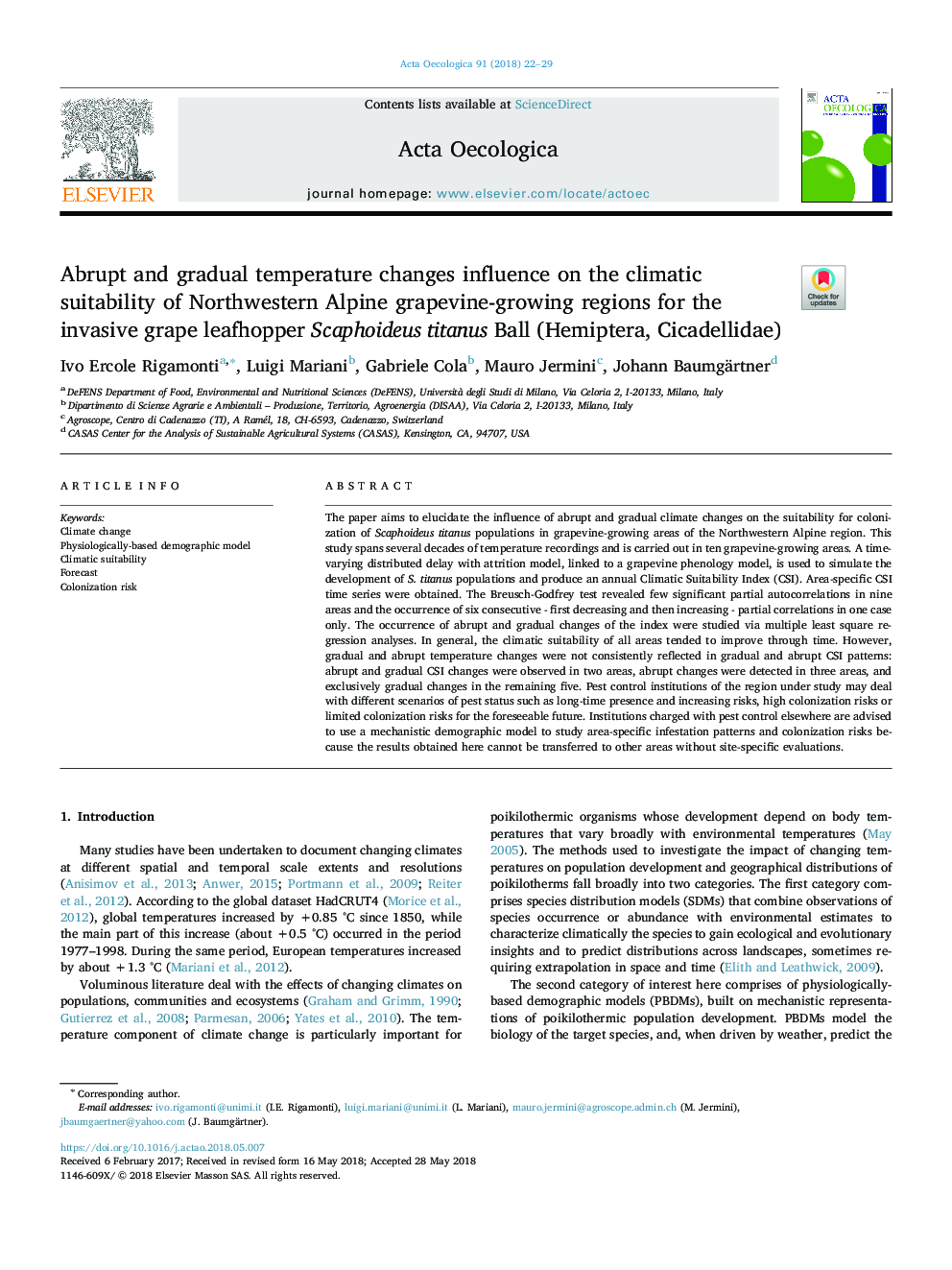| Article ID | Journal | Published Year | Pages | File Type |
|---|---|---|---|---|
| 8846448 | Acta Oecologica | 2018 | 8 Pages |
Abstract
The paper aims to elucidate the influence of abrupt and gradual climate changes on the suitability for colonization of Scaphoideus titanus populations in grapevine-growing areas of the Northwestern Alpine region. This study spans several decades of temperature recordings and is carried out in ten grapevine-growing areas. A time-varying distributed delay with attrition model, linked to a grapevine phenology model, is used to simulate the development of S. titanus populations and produce an annual Climatic Suitability Index (CSI). Area-specific CSI time series were obtained. The Breusch-Godfrey test revealed few significant partial autocorrelations in nine areas and the occurrence of six consecutive - first decreasing and then increasing - partial correlations in one case only. The occurrence of abrupt and gradual changes of the index were studied via multiple least square regression analyses. In general, the climatic suitability of all areas tended to improve through time. However, gradual and abrupt temperature changes were not consistently reflected in gradual and abrupt CSI patterns: abrupt and gradual CSI changes were observed in two areas, abrupt changes were detected in three areas, and exclusively gradual changes in the remaining five. Pest control institutions of the region under study may deal with different scenarios of pest status such as long-time presence and increasing risks, high colonization risks or limited colonization risks for the foreseeable future. Institutions charged with pest control elsewhere are advised to use a mechanistic demographic model to study area-specific infestation patterns and colonization risks because the results obtained here cannot be transferred to other areas without site-specific evaluations.
Related Topics
Life Sciences
Agricultural and Biological Sciences
Ecology, Evolution, Behavior and Systematics
Authors
Ivo Ercole Rigamonti, Luigi Mariani, Gabriele Cola, Mauro Jermini, Johann Baumgärtner,
